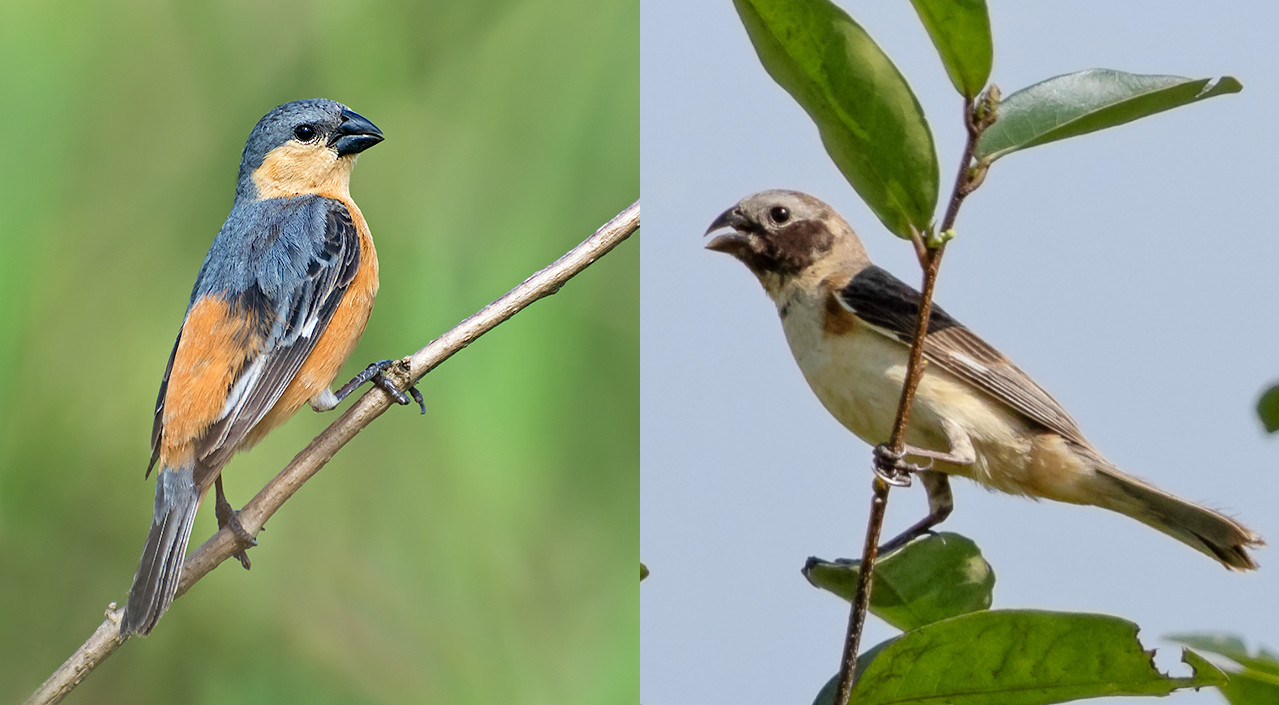Sporophila spp.

These pictures, which I gratefully borrowed from Wikipedia, are occasioned by an an article by Erich D. Jarvis of the Howard Hughes Medical Institute. Briefly, Dr. Jarvis describes work by Sheela Turbek and colleagues at the University of Colorado showing that the two species pictured above are separated by female choice. That is, they share the same geographical region, but are mostly reproductively isolated by sexual selection mediated by plumage and song. The two species differ in three genomic regions, two of which are related to plumage, and one of which is on a sex chromosome that is found in both males and females. Most likely we are seeing speciation in real time, and eventually the two species will be wholly reproductively isolated.
As we go to press this morning, so to speak, Science has posted a second article, by Elizabeth Pennisi, giving more background and noting, among other things, that the genes that define the two species have merely been reorganized, so that evolution can be rapid. Ms. Pennisi also explains, for those not in the know, why biologists are interested in sympatric speciation such as is evidenced by the seedeaters.
